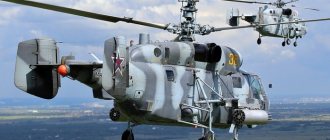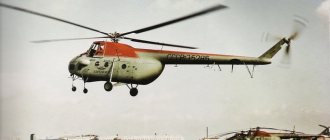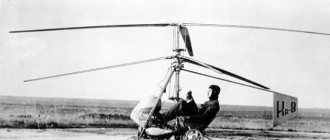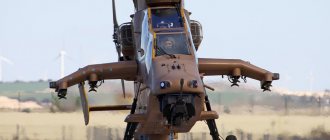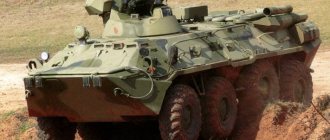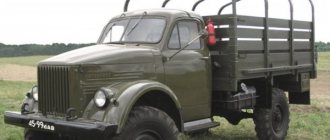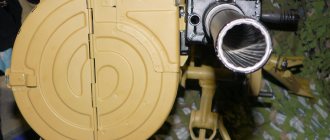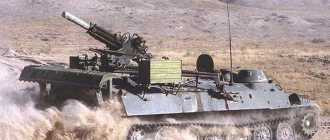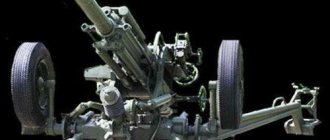Today it is impossible to find a large warship in the list of any navy that is not equipped with a helicopter. Rotorcraft are a mandatory technical means of equipping military ships, which significantly increases their combat capabilities. In Russia, this niche is today occupied by the Ka 27, an anti-submarine helicopter created in the 70s of the 20th century and undergone a radical modernization. Time will tell how well this machine meets modern requirements. In the current conditions, the Russian Helicopters concern is actively working to create a new sea-based helicopter that would replace the veteran.
Historical reference
In the spring of 1970, after the completion of the review of the Ocean flights, the Commander-in-Chief of the Navy held a meeting with the chief designer of the Kamov Research Institute and with the deputy commander of fleet aviation, Lieutenant General Naumov. As a result of the conversation, a decision was made to open a new project. The final decision to begin the development of a special anti-submarine helicopter Ka-252, intended for naval vessels Project 1143, was adopted at a meeting of the USSR Council of Ministers in April 1972. The meeting of the State Commission on the aircraft took place in the summer of next year.
Trial ball
Historically, military and civilian sea-based helicopters created in the USSR are represented by samples of equipment created in the bowels of the design bureau of N.I. Kamova. Despite the fact that in terms of the number of aircraft created and launched into series, the Mil company is seriously inferior to the design scope of the Mil Design Bureau, Kamov’s machines are unique in their kind. From the very first prototypes, Nikolai Ilyich Kamov focused his attention on the use of a coaxial design in the design of machines. Subsequently, this rotor rotation scheme began to be used on all subsequent models, becoming a signature feature of the Kamov Design Bureau.
The first car to see the light was the Ka-10. Next came the Ka-15 helicopter. Neither one nor the other machine received recognition due to low flight performance and insufficiently developed design. A real breakthrough in the field of serial helicopter production was the Ka-25 helicopter, which turned out to be an order of magnitude more successful. It was this vehicle that became the first model to enter the navy in 1966. The anti-submarine version of the Ka-25PL helicopter has become the most popular and widely used. New equipment was supplied to equip anti-submarine ships. With the construction and commissioning of specialized Project 1123 anti-submarine ships of the Condor type, the Ka-25PL rotorcraft became an indispensable element of anti-submarine defense.
Despite mass production, the Soviet vehicle had limited technical and, accordingly, combat capabilities. In comparison with foreign analogues, the Ka-25PL was inferior in many respects. The helicopter had a limited range and low payload. The machine was not particularly reliable, which was a strong argument for opponents of the use of this helicopter in the navy. Warships needed a more powerful and advanced machine with high performance characteristics.
As a result of operation, analyzing and assessing the technical capabilities of Soviet naval aviation, in the high offices of the General Staff of the USSR Navy, a decision was made to create a new helicopter. By that time, the Soviet Union had launched a company to build aircraft-carrying ships, which would have powerful aircraft weapons. The new helicopter was supposed to become the main anti-submarine weapon of heavy aircraft-carrying cruisers of Project 1143.
The technical problem was not born out of nowhere. Even then, work was underway at Kamov’s design bureau to create a new helicopter. Having assessed all the advantages of the new project, it was decided to begin developing a new machine, which a little later received the experimental designation Ka-252. A resolution of the Council of Ministers in the spring of 1972 marked the beginning of work in this direction. The option of radical modification of existing machines was considered.
Start of production
The Ka-27 helicopter is essentially an improved version of the Ka-25. Serial production of the new car took place at a plant in the city of Kumertau. However, this was preceded by the flight of a prototype, which took off for the first time on August 8, 1973. In December of the same year, the aircraft made its first flight along a circular trajectory.
The design of the Ka-27 helicopter is quite standard for the Kamov Design Bureau and is a twin-rotor coaxial. It is worth noting that this combat aircraft was approximately three to five times greater than the capabilities of its predecessor, the Ka-25. In particular, parameters such as flight duration and length increased by almost 40%. Also, the installation of more powerful and reliable engines led to an increase in the specific thrust-to-weight ratio by 1.7 times.
History of the Ka-27
The prototype of the helicopter, called "252", was lifted into the air on 08/08/1973.
12/24/1973 – it was used for the first time to fly in a circle.
Serial production of the Ka-27 began in 1977 in Kumertau. Due to various reasons and circumstances, testing and modification of the helicopter lasted 9 years, and the Ka-27 was put into service only in April 1981.
The first 5 production vehicles began performing combat missions on the Minsk aircraft carrier in the fall of 1978.
In 1979, a regiment of shipborne helicopters was created, based at the Severomorsk-2 airfield, which included the Ka-27. A couple of years later, they began to be based on all aircraft-carrying ships of Project 1143.
Currently, the Ka-27 is deployed on the aircraft carrier Admiral Kuznetsov, where it continues to conduct military service. The helicopter was exported to China, India, Yugoslavia, and Syria under the name Ka-28.
Main purpose
The Ka-27 helicopter is used to detect, track and neutralize enemy submarines, which travel at a depth of up to 500 m at a speed of no more than 75 km/h and are located up to two hundred kilometers from the lead ship. In this case, a sea state of 5 points is allowed. Weather conditions can be either normal or difficult. The time of day does not matter.
The helicopter is also capable of performing assigned tasks both independently and as part of a group.
In service
In service
- Aviation of the Russian Navy - 88 Ka-27, as of 2012
- Aviation of the Ukrainian Navy - 16 Ka-27, as of 2012
- Vietnamese Air Force - 7 Ka-27, as of 2012
- Indian Navy Aviation - 10 Ka-28, as of 2012
- Aviation of the PRC Navy - 12 Ka-28, as of 2012
- Syrian Navy - 2 Ka-28PL, as of 2012
Was in service
- Aviation of the USSR Navy. — was in service until the collapse of the country in 1991.
- Air Force of the SFR Yugoslavia. — The Ka-28 was in service with the 784th squadron of anti-submarine helicopters of the 97th aviation brigade, based at the air base in Divulja and intended for coastal operations and support for the Navy of the SFR Yugoslavia. In addition to the Ka-28, the squadron was armed with the Ka-25 and Mi-14.
- Air Force of the Republic of Yugoslavia - 2 Ka-28 helicopters have been removed from service and are located in Serbia in the Belgrade Aviation Museum.
- Revolutionary Cuban Navy
Structural elements
The Ka-27 combat helicopter is equipped with three-blade counter-rotating propellers that fold when stationary on the ship. The blades of these propellers are made of fiberglass, and their bushings are made of titanium.
The fuselage of the vehicle is made of solid aluminum alloy. To ensure stable provision of both longitudinal and directional stability of the helicopter, a tail unit with two fins is used. The washer of each fin has an uncontrolled slat and is turned with its toe towards the axis of the fuselage itself.
The landing gear has four non-retractable legs and is equipped with a hydraulic system for slightly lifting the helicopter in order to provide convenient access to the cargo compartment. A characteristic feature of the front wheels is self-orientation. It is also possible to install skis.
Aircraft power unit
The helicopter is driven by two TV 3 turboshaft engines, the total take-off power of which is 2x2200 horsepower, and a VR-252 gearbox. The rotors have a stabilized rotation speed during flight.
The main sources of electrical power are two three-phase alternating current generators with a frequency of 400 Hz, which are driven by a VR-252 gearbox. The generators operate in parallel mode, but only the left one is directly connected to the network, and the right one is in reserve. Direct current in a helicopter is obtained by converting it from alternating current using two VU-B semiconductor rectifiers.
Emergency power is provided by two nickel-cadmium batteries, as well as two current converters.
During an emergency landing on the water surface, inflatable balloons are activated, which during normal flight are placed in a folded position in the side containers of the helicopter located on the fuselage. It is important to note that ballonets do not guarantee the required buoyancy of the vehicle when the engines are turned off.
Also, the Russian Ka-27 helicopter is equipped with an autopilot system and a semi-automatic system for transmitting coordinates and other information about a detected submarine.
The crew consists of three people: a pilot, a navigator-coordinator and an anti-submarine system operator.
Modifications of the Ka-27
- Ka-252 is the first prototype of the deck-based anti-submarine Ka-27.
- Ka-252TL is a ship-based telemetry helicopter.
- Ka-27PL is an anti-submarine deck variant.
- Ka-27PS is a search and rescue version of the helicopter.
- The Ka-27PSD is an extended-range search and rescue glider.
- Ka-27REP is a test helicopter for electronic countermeasures.
- Ka-27E is a helicopter performing radiation reconnaissance.
- The Ka-27M is a modernized modification of the Ka-27, which includes a radar command-tactical system. It includes magnetometric, acoustic, radio reconnaissance systems, and an airborne radar station. The radar is located under the fuselage and is used to identify surface, ground and air objects. In 2014, 4 Ka-27PL vehicles began to be converted into Ka-27M by order of the Russian Navy. Serial production was also planned to start in 2014.
- The Ka-28 is an export modification of the Ka-27, which features a simplified set of equipment. Nowadays it is not exported, but is sent to meet the needs of the Russian Air Force.
- Ka-29 is a transport and combat version. Production is currently not established.
- The Ka-32 is a civil aviation helicopter that is operated not only by Russian airlines, but also by Canada, Malaysia, South Korea and Switzerland.
"Octopus"
This is the name of the special on-board complex, which includes:
- A radar station that solves navigation problems and searches for submarines that have surfaced. The system fairing is located on the nose of the fuselage.
- Lowered hydroacoustic station. It is located in the rear section of the fuselage and determines the coordinates of submarines.
- Calculation and sighting device. Provides automatic launch of the helicopter to a point for subsequent release of destructive weapons.
- Radiohydroacoustic type buoy.
- The detector is magnetic.
In addition, the Ka-27 anti-submarine helicopter is capable of dropping markers, smoke generators, and transponder beacons.
Surface targets this combat aircraft detects during flight at an altitude of up to 500 m:
- If the EPR is up to 250 m - at least 25 km.
- If the EPR is 2 m - at least 5 km.
A distinctive feature of the Octopus system is the presence of a special digital information and computing subsystem, as well as the highest degree of automation of the boat detection process itself. The speed of operation of the system deserves special attention: in one hour of operation it is capable of conducting a detailed examination of the water surface, the area of which does not exceed 2000 square kilometers.
Preface to the main idea
The rapid development of helicopter technology in the post-war years raised the technical equipment of armies to a higher level. The strategy and tactics of reconnaissance, transport, landing and search operations have changed radically. In the helicopter, the armed forces received an indispensable means of delivery, reconnaissance and armed combat. Not only army officials were able to appreciate the tactical and technical characteristics of rotorcraft. The fleet was also interested in equipping the ship's personnel with a new type of equipment. The helicopter, unlike airplanes, had special flight qualities and capabilities. The presence of a rotorcraft on board a warship increased its combat capabilities, imparted stability to the anti-submarine defense and the ship's survivability system.
The first practical experiments in placing helicopters on board warships were successful. It was only necessary to create rotorcraft, specially adapted for deployment on board a ship and for operations at sea. Work in this direction began simultaneously in the United States and the USSR. Other countries, such as Great Britain, France, Japan and Italy, which had fairly large naval forces and a developed aviation industry, also did not stand aside.
Aircraft manufacturing firms were working to create a rotorcraft capable of meeting naval requirements. Warships began to be equipped with take-off and landing helipads. In the USSR, the task of creating a helicopter for the needs of the navy was solved by a design bureau headed by Nikolai Ilyich Kamov. His competitor in this field, Mikhail Leontievich Mil, also tried his hand at creating a vehicle for the Navy, but his prerogative remained land vehicles.
Technical specifications
The Ka-27 deck helicopter has the following technical characteristics:
- Number of people in the crew – 3.
- Normal take-off weight is 11,000 kg.
- Maximum flight speed is 270 km/h.
- Cruising flight speed is 230 km/h.
- Dynamic flight ceiling – 2950 m.
- The actual flight range is 800 km.
- The main rotor has a diameter of 15.9 m.
- Machine length – 11.3 m.
- When folded, the vessel has a height of 5.4 m.
- Load capacity indicator – 5000 kg.
- The weight of fuel in tanks is 12,000 kg.
